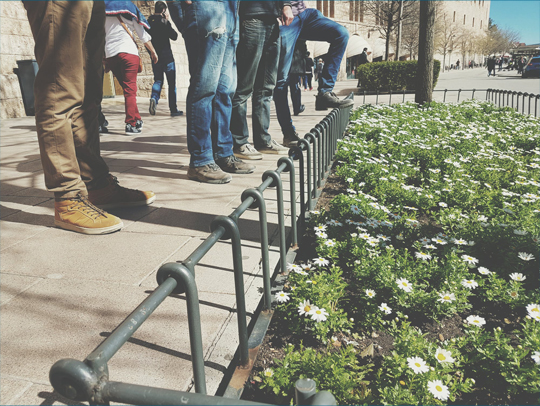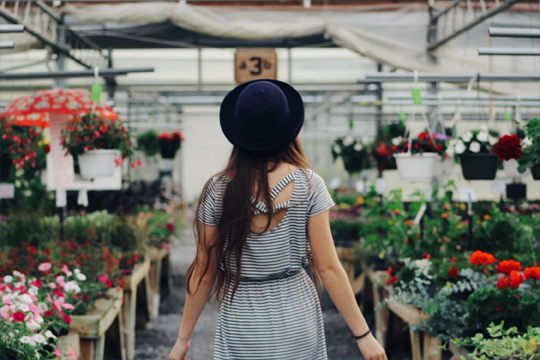#Adulting: Landscaping for People Who Kill Everything
There’s usually no defining moment that stands out as “The Day I Learned to Landscape” so it’s typically long and arduous process filled with errors, aha! moments, and usually a handful of dead plants. When you first buy your home it’s easy to envision how it will look with window boxes filled with flowers and a vegetable garden in the back, but if your thumb is more brown than green, you may want to slow down.
Like the ability to drink black coffee or appreciate contemporary classical music, landscaping seems to be one of those things you magically get better at with age. One day it’s a sea of sugary frappuccinos and dead houseplants, and the next, it clicks. Your once bitter coffee is now mind fuel and your once wilted potted plants become a bed of flowers.
Or something.
Either way, your new home is lacking landscaping and you don’t really want to spend all your money on plants you’re probably hopefully not going to kill. So what’s a new homeowner to do? It’s time for some outside #adulting.

Be Realistic
Sure, you might dream of an insta-worthy backyard filled with the lush orchids you saw on your honeymoon in the islands, but you’re not getting hibiscus in Minnesota. Not outdoors and not easily. Likewise you might dream of a big ol’ sugar maple you can tap in the spring and watch grow over the years, but that’s simply not going to happen if you live in Arizona.
The goal is to find something that works well for your climate. If you find things that can grow wild where you live and you’ll know you’re on the right track. Local horticulture and gardening groups will be your best resource to find plants that are hearty and well-suited for your particular area.

Enlist Assistance
The do-it-yourself trend makes it easy to believe that after reading some articles and watching some videos, you can figure out pretty much anything. While that might lead to some success when it comes to fixing a washing machine or opening a wine bottle without a corkscrew, if you use that same mentality for gardening you’re apt to fail. Don’t get us wrong, do-it-yourself gardening is a great way to really get your hands dirty (literally) and learn about what you’re doing, but do-it-yourself shouldn’t mean do-it-by-yourself. If you’ve got a habit of killing your plants or you don’t know where to get started, enlist some help. If there’s a local gardening or horticulture group you can join, great! If not, look for Facebook or other online social groups in your area. These groups tend to be filled with gardeners of all skill levels and they can be more than happy to help you figure out where to start or what comes next.

Don’t Pick Things That Will Die
If keeping your house looking fresh and landscaped throughout the year is important to you, you’ll want to pick things that look good for most of the year. While blooming flowers are pretty, they only last for a few months max and then you’re left with barren space. Expert gardeners and landscapers are able to plan so that each spot has the appropriate flowers for each season, but if you’re starting out you may want to consider shrubs instead. Shrubs are designed to be hearty, add color, and last year round making them a much better value as well as easier to care for.

Read the Directions
So you know what to plant according to where you live, but you’ll need to do a little more research before you can just put the plant in the ground and call it a garden. Does your plant need more sun or shade? Does it like a lot of water or would drier be better? Plants bought as nurseries or big box store gardening sections tend to have this information available–sometimes right in or on the pot you take home. Read and heed these directions, that’s the best way to ensure your plant will thrive.
If you try these tips, and still have trouble cultivating the garden you desire, remember the words of Janet Kilburn Phillips,
- 20 Trends from the 1920’s to Watch in 2023 - March 24, 2023
- How much does a real estate agent make? - September 4, 2020
- 5 Things Real Estate Agents Don’t Want You to Know - July 17, 2020




Trackbacks & Pingbacks
[…] might be risky, because you never know what the weather will be like, but working from your backyard is a great way to be productive while also staying healthy. During times like these, its important […]
[…] you live in an area that doesn’t get a lot of rain, try xeriscaping! Xeriscaping is a landscaping process where you use plants that don’t require a lot of water, and they’re pretty […]
Leave a Reply
Want to join the discussion?Feel free to contribute!